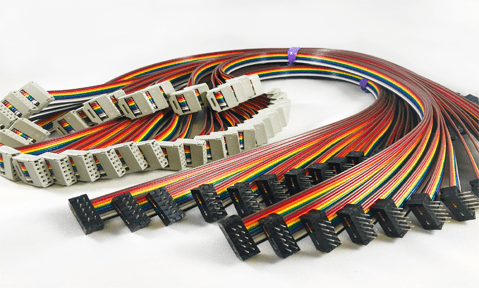Introduction
The VGA (Video Graphics Array) port has served as a cornerstone of display technology for more than thirty years. Launched in 1987 by IBM, the VGA port established itself as the standard for linking computers to monitors, significantly transforming computer graphics by enabling support for higher resolutions and greater color depths than earlier standards. Although digital interfaces such as HDMI, DisplayPort, and DVI have become more prevalent, VGA continues to be utilized in various applications, highlighting its durability and adaptability.
This article delves into the history, technology, evolution, advantages, limitations, and continued significance of the VGA port in contemporary computing. While it may appear outdated in comparison to newer standards, VGA remains crucial in specific contexts, especially within legacy systems and budget-friendly applications.
1. History of the VGA Port

1. The Introduction of VGA
The VGA port was launched by IBM in 1987 as part of its PS/2 series of personal computers. It succeeded earlier standards such as CGA (Color Graphics Adapter) and EGA (Enhanced Graphics Adapter), offering enhanced resolution, color depth, and overall graphical fidelity. Initially, VGA supported 16 colors at a resolution of 640×480, with the capability to display 256 colors in certain modes. These advancements established VGA as the predominant standard for computer graphics during the late 1980s and 1990s.
Upon its introduction, VGA marked a substantial advancement in display technology. It enabled the presentation of more intricate and vivid images on screens, benefiting not only business applications such as spreadsheets and word processors but also the burgeoning video game industry. This success resulted in the widespread integration of VGA ports in personal computers and monitors for an extended period.
2. Widespread Acceptance and Standardization
Owing to its strong performance and the increasing demand for enhanced graphics, VGA rapidly became the standard display interface for the majority of personal computers. As the popularity of IBM-compatible PCs grew in the late 1980s and early 1990s, the VGA port became prevalent in the global market, establishing itself as the default display interface for computer systems around the world. The extensive adoption of VGA extended beyond personal computers; it was also utilized in workstations, servers, and professional graphics systems.
The Video Electronics Standards Association (VESA) recognized VGA as the basis for the creation of newer display standards and resolutions, leading to the development of Super VGA (SVGA) and other advanced variants. SVGA enhanced VGA’s capabilities, accommodating resolutions up to 1280×1024 and supporting 16 million colors, thereby reinforcing VGA’s position as a versatile and adaptable standard.
2. How VGA Works: The Technology Behind the Standard

1. Analog Signal Transmission
A notable characteristic of the VGA port is its reliance on analog signal transmission. In contrast to contemporary digital standards such as HDMI or DisplayPort, which transmit information as digital signals, VGA utilizes an analog signal to transfer image data from a computer’s graphics card to a monitor. This analog characteristic of VGA entails that the signal is conveyed through continuously varying voltages that represent the color and brightness of each pixel displayed on the screen.
The VGA cable is equipped with 15 pins, each designated for a specific purpose. The principal pins include:
– Red, Green, and Blue (RGB) color channels: These pins transmit the analog signals for the primary colors—red, green, and blue—combined to produce the complete range of colors on the display.
– Horizontal and Vertical Sync: These signals manage the timing of the image refresh on the monitor, ensuring accurate frame rendering.
– Ground Pins: These pins provide grounding for the signal, minimizing interference and enhancing signal integrity.
The analog nature of VGA implies that signal quality can deteriorate over extended distances, leading to noticeable artifacts such as ghosting, blurring, or signal noise. This limitation is a significant disadvantage of analog transmission when compared to digital interfaces, which can maintain signal quality over longer distances without degradation.
2. VGA Resolutions and Color Depth
The initial VGA standard accommodated a maximum resolution of 640×480 pixels, supporting 16 colors in text mode or 256 colors in graphical mode. Over the years, various enhancements to the VGA standard, including SVGA (Super VGA), were introduced to facilitate higher resolutions and greater color depths. For instance:
– 640×480 at 16 or 256 colors (standard VGA)
– 800×600, 1024×768, 1280×1024, and higher in SVGA and subsequent standards
These advancements enabled VGA to remain relevant even as display technology progressed throughout the 1990s. Nevertheless, the analog nature of the signal imposed limitations on the maximum achievable resolution and image quality in comparison to digital alternatives.
3. Advantages and Limitations of VGA
1. Advantages of VGA
Universal Compatibility: One of the primary advantages of VGA is its extensive compatibility across various devices. For many years, nearly every personal computer, monitor, projector, and display device has included a VGA port, establishing it as a standard for display connections. Even in contemporary settings, numerous older computers, monitors, and projectors still feature VGA ports, making it a practical choice for linking legacy equipment.
Affordability: VGA continues to be a budget-friendly option for entry-level systems, such as economical laptops, older monitors, and projectors. Its widespread presence has resulted in low costs for VGA adapters and cables, appealing to users seeking economical display solutions without the necessity for top-tier quality or advanced functionalities.
Ease of Use: The analog design of VGA, coupled with its uncomplicated nature, facilitates easy integration into various systems. It does not require intricate setups or configurations, rendering it a straightforward solution for fundamental display requirements.
2. Limitations of VGA
Analog Signal Quality: The primary disadvantage of VGA lies in its dependence on analog signal transmission, which can result in diminished image quality, particularly at elevated resolutions or over extended distances. Analog signals are prone to interference, noise, and degradation, preventing VGA from achieving the clarity and sharpness offered by modern digital standards such as HDMI or DisplayPort.
Resolution Constraints: Although VGA can accommodate resolutions up to 1280×1024 or higher in SVGA mode, it falls short in delivering the high-definition performance provided by newer interfaces. Contemporary standards like HDMI 2.1 and DisplayPort 1.4 are capable of supporting 4K, 8K, and even greater resolutions with enhanced color depth and refresh rates.
Color Depth and Refresh Rate Limitations: VGA’s capabilities in terms of color depth and refresh rates are restricted when compared to digital standards. For users who demand high-quality color reproduction or rapid refresh rates, such as graphic designers, video editors, and gamers, VGA proves inadequate.
Compatibility Issues with Modern Devices: As an increasing number of modern devices transition to digital interfaces, VGA has become less relevant.
4. VGA in Modern Usage
1. VGA in Legacy Systems
Although digital interfaces have largely supplanted VGA, it remains integral to legacy systems. Numerous older workstations, servers, and industrial machinery still depend on VGA for their display output. In many instances, these systems are not easily upgradeable, making VGA the most dependable and cost-efficient option for display connectivity.
In sectors where the longevity of equipment is paramount, such as manufacturing, medical imaging, and aerospace, VGA continues to facilitate communication between legacy machines and various display devices.
2. VGA in Educational and Budget Applications
VGA remains prevalent in educational settings due to its cost-effectiveness and compatibility with older projectors and monitors. Many classroom projectors, interactive whiteboards, and other economical display systems are equipped with VGA ports, allowing for the effective use of older computers and presentation tools.
Users with budget constraints also favor VGA, as upgrading to pricier digital displays may not be necessary. For individuals with basic computing requirements, such as internet browsing or word processing, VGA provides a reliable and affordable means of connecting to a display.
3. VGA Adapters and Converters
As HDMI, DisplayPort, and USB-C become increasingly common, many modern devices have phased out VGA ports. Nevertheless, the relevance of VGA has been maintained through the use of adapters and converters. Devices such as HDMI-to-VGA and DisplayPort-to-VGA adapters enable users to connect contemporary laptops and desktops to older monitors and projectors equipped with VGA, thereby ensuring compatibility while adapting to modern standards.
5. The Future of VGA
VGA is swiftly losing relevance in the consumer electronics sector, yet it remains significant in certain industries and applications. Its enduring presence can be linked to its straightforward design, affordability, and extensive availability. Nevertheless, with the increasing adoption of 4K and 8K displays, alongside the ongoing advancements in digital interfaces such as HDMI and DisplayPort, VGA’s prominence in mainstream computing is expected to further decline.
Manufacturers are gradually eliminating VGA ports in favor of more sophisticated digital interfaces, suggesting that within a few years, VGA may become entirely obsolete except in specialized applications. For the majority of users, transitioning to a digital standard presents numerous advantages.






